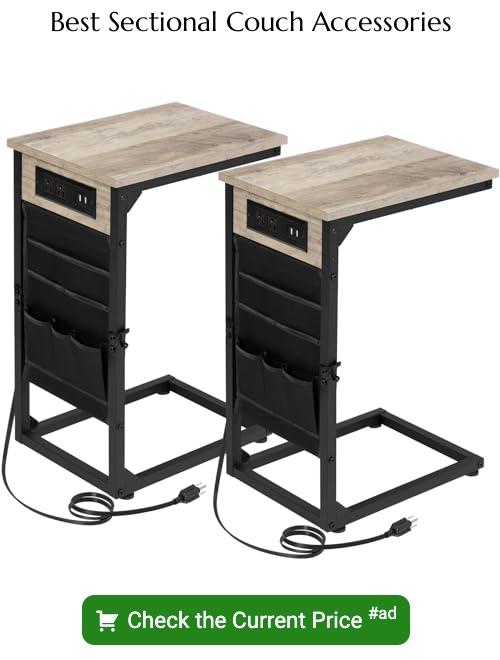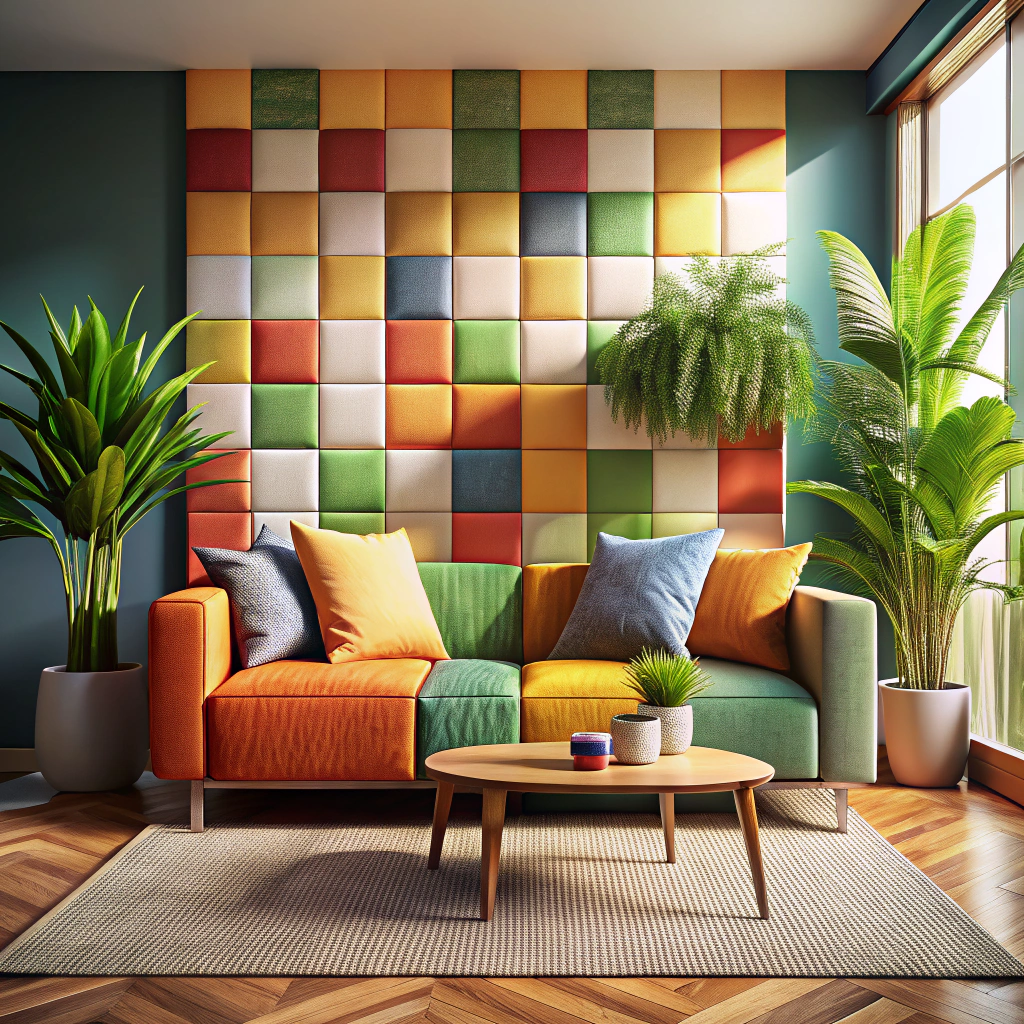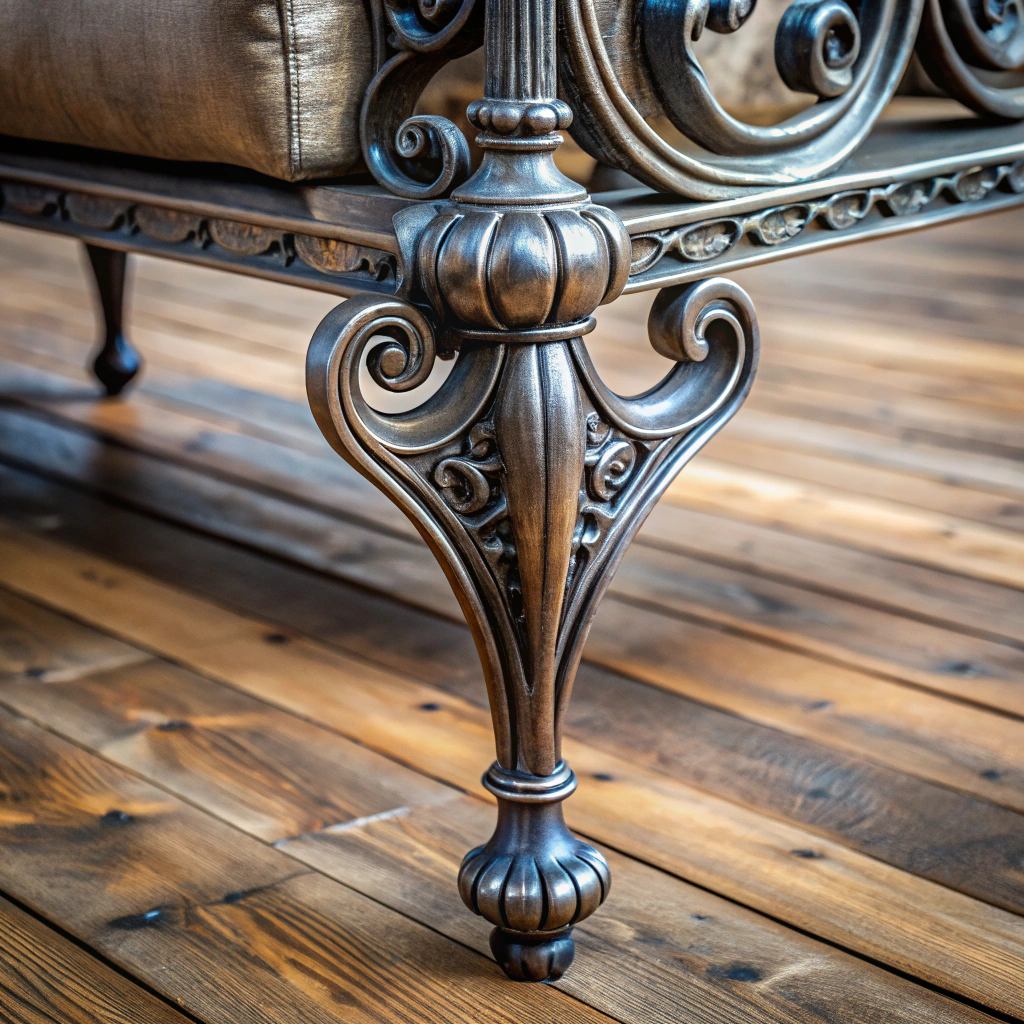Last updated on
Discover the art of perfectly positioning a sectional couch in your living space to create an inviting and functional centerpiece for relaxation and entertainment.
Are you planning to buy a sectional couch for your living room but unsure about how to place it? Sectional couches are a great addition to any home, providing ample seating space and comfort. However, placing them in the right spot can be quite tricky.
Don’t worry! In this article, we’ll guide you through some essential tips and tricks on how to place your sectional couch like a pro. Whether you have a small or spacious living room, we’ve got you covered! So let’s dive in and learn how to make the most of your new sectional couch.
Table of Contents
Measuring the Room

Measuring the room will help you determine the size and shape of the sectional that will fit perfectly into your space. Start by measuring the length and width of your living area, including any alcoves or nooks where you plan to place furniture.
Next, consider ceiling height as well as doorways and hallways leading into other rooms; this information can help you choose a sectional that won’t be too large or difficult to move around.
Once you have these measurements, it’s time to assess how much space is available for seating arrangements while still allowing for comfortable traffic flow throughout the room. Keep in mind that sectionals are often larger than traditional sofas so make sure there’s enough clearance between walls and other pieces of furniture like coffee tables or end tables.
Assessing Furniture Layout
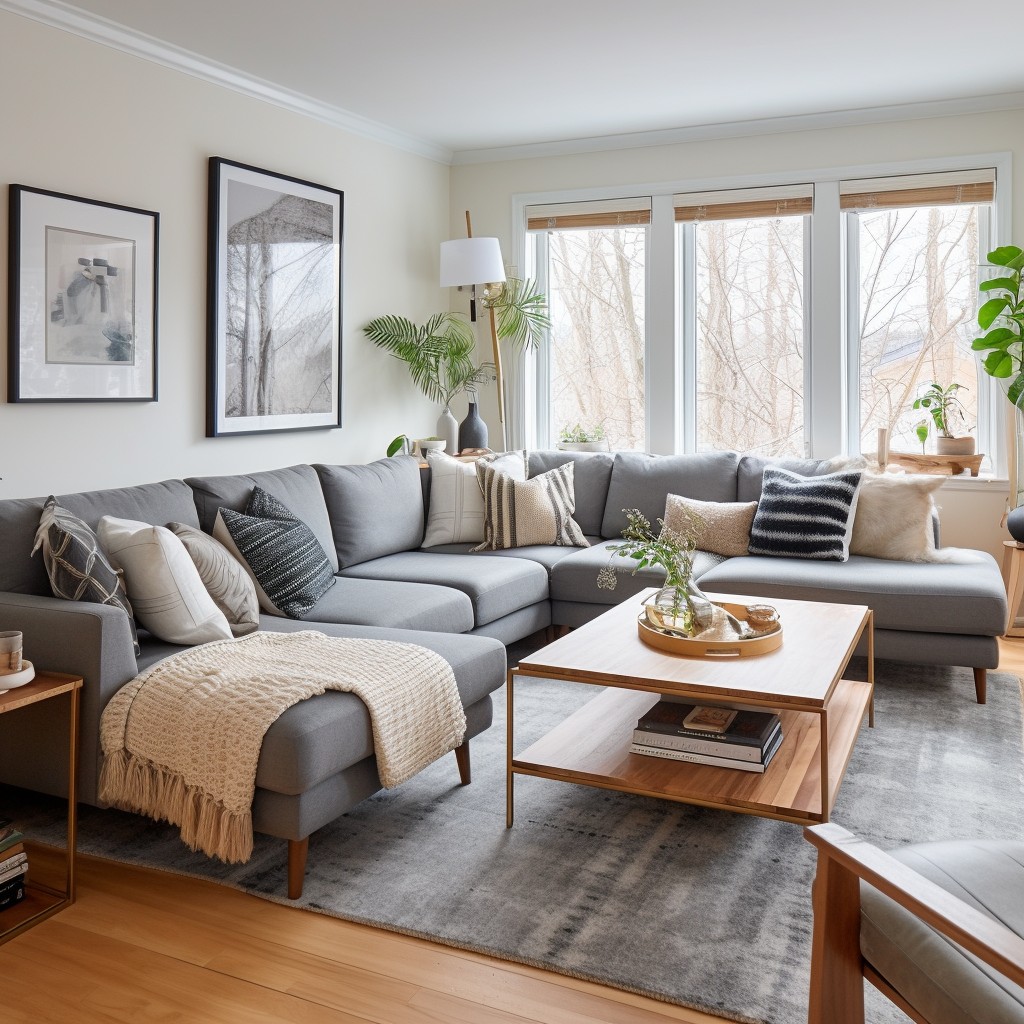
This will help you determine where to place your sectional couch and other pieces of furniture in a way that maximizes space and functionality. Start by identifying any existing focal points in the room, such as a fireplace or large window, and consider how these can be incorporated into your layout.
Next, think about traffic flow through the room. You want to ensure that there is enough space for people to move around comfortably without feeling cramped or obstructed by furniture placement.
Consider creating designated walkways between seating areas so that guests can easily navigate through the space.
Another important factor when assessing furniture layout is determining which pieces of furniture are essential versus optional based on their function within your living area. For example, if you frequently entertain guests at home then having additional seating options like accent chairs may be necessary whereas if it’s just family members who use this area then fewer seats might suffice.
Choosing the Right Sectional
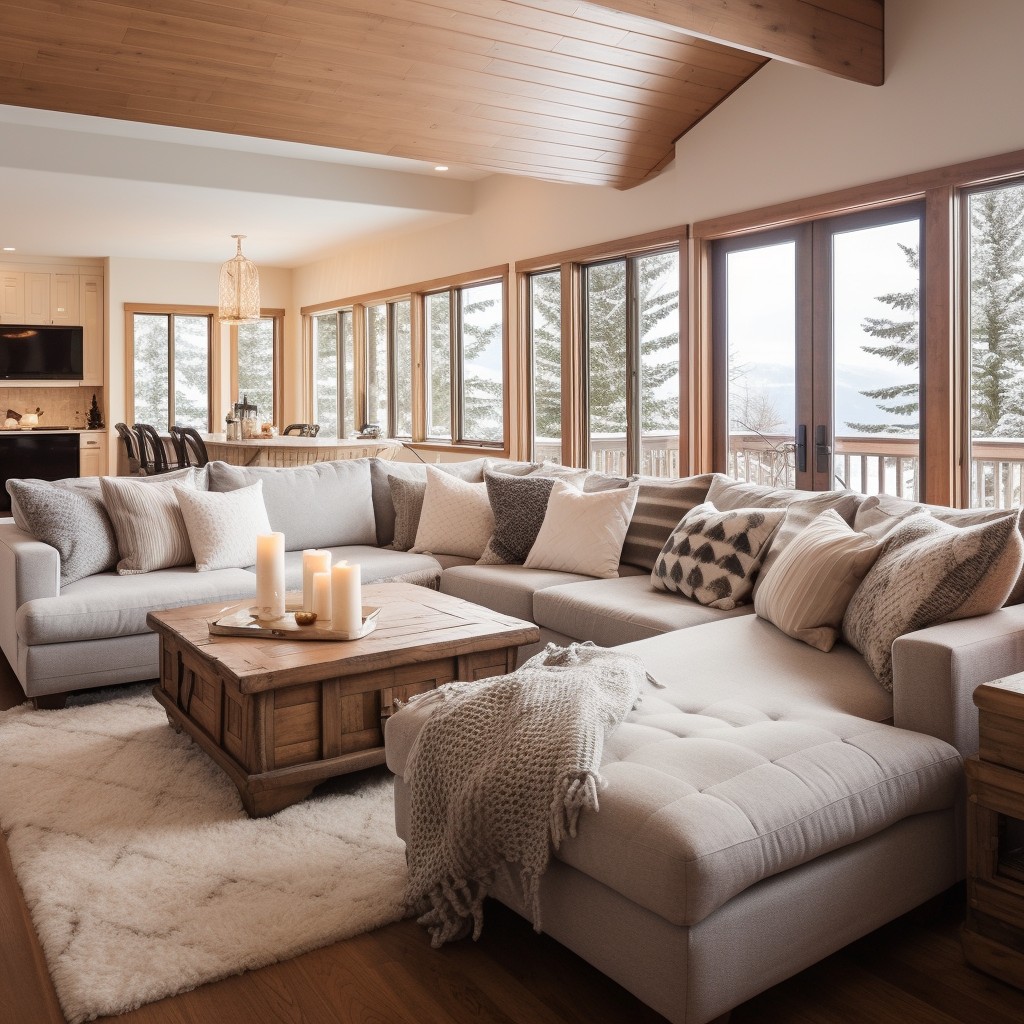
The first thing you need to consider is your personal style and taste. Sectional sofas come in various styles, from traditional to modern designs, so pick one that complements your home decor.
Another crucial factor is comfort. You want a sectional that provides ample seating space for everyone while still being comfortable enough for long hours of lounging or movie nights with friends and family.
The material of the sofa also plays a significant role in its durability and maintenance requirements. Leather sectionals are easy to clean but may not be suitable if you have pets or young children who could scratch them easily.
Selecting the Sectional Size and Shape
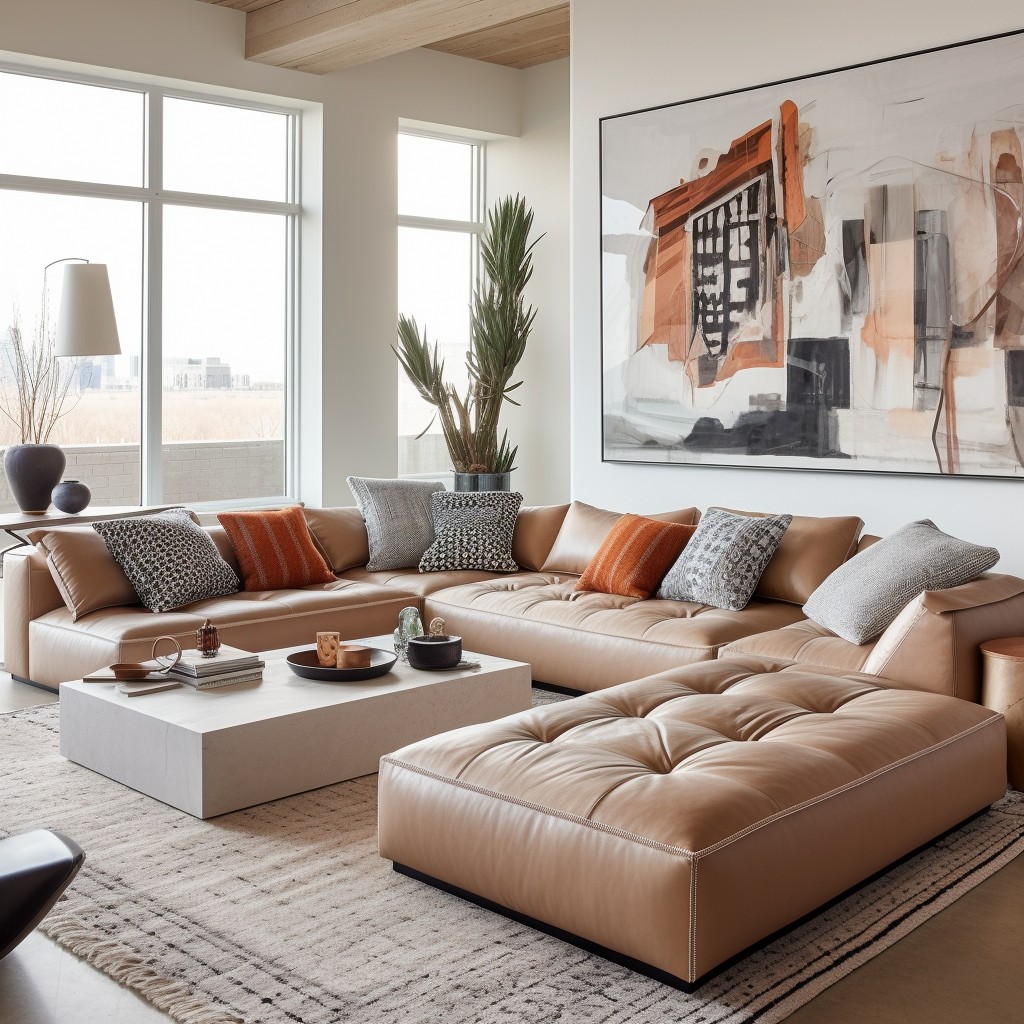
The right size and shape will ensure that your sectional fits perfectly in your living space while providing maximum comfort for you and your guests.
Firstly, measure the area where you plan to place the sectional couch. This will help determine what size of a sofa would fit best in that particular space.
Consider other furniture pieces already present in the room as well as traffic flow when deciding on the dimensions of your new sofa.
Next, think about which shape would work best for you – L-shaped or U-shaped? An L-shape is ideal if you have limited floor space but still want ample seating options. A U-shape provides even more seating capacity but requires more floor area.
Considering Traffic Flow
You don’t want your guests or family members to feel cramped or have difficulty moving around the room. Therefore, it’s crucial to ensure that there’s enough space for people to walk through without bumping into furniture.
To optimize traffic flow in your living room, start by identifying the main entry and exit points of the room. Then position your sectional couch in a way that doesn’t block these pathways.
If possible, leave at least three feet of clearance between the edge of the sectional and any other piece of furniture or wall.
Another tip is to avoid placing side tables or lamps near high-traffic areas as they can easily get knocked over if someone accidentally bumps into them while walking past.
Room Flow Optimization
Room flow optimization is all about creating a seamless transition between different areas of your home while ensuring that there is enough space for movement and activities.
To achieve this, consider how people will move around in the room. Will they be able to walk freely without bumping into furniture or each other? Is there enough clearance for doors and windows? Are there any obstacles that need to be removed?
One way to optimize room flow when placing a sectional couch is by leaving ample walking space around it. This means positioning the couch away from walls or other pieces of furniture so that people can easily walk behind it.
Another tip is to create clear pathways between different areas of your living space. For example, if you have an open-concept floor plan with a dining area adjacent to your living area, make sure there’s enough clearance between them so that people can move back-and-forth comfortably.
Positioning the Sectional
The placement of a sectional couch can make or break the overall look and feel of a room. Therefore, it is essential to consider several factors before deciding on its final location.
Firstly, think about how you want people to interact with each other while sitting on the couch. If you’re looking for an intimate setting where everyone faces each other, place the sectional in a U-shape or L-shape configuration with all seats facing inward.
Alternatively, if you’re planning on using your sectional as part of an entertainment setup such as watching TV or playing video games together with friends and family members then positioning them towards that focal point would be ideal.
Another factor to consider when positioning your sofa is traffic flow through space; ensure there are no obstructions around so that people can move freely without bumping into furniture pieces.
Determining Chaise Position
The chaise is the extended part of the sofa that allows you to stretch out and relax comfortably. It’s important to decide where you want it before positioning your sectional in your living room.
If you have a small space, consider placing the chaise on one end of your sectional against a wall or corner. This will help maximize floor space while still providing ample seating for guests.
In larger rooms, try positioning the chaise facing towards other furniture pieces such as chairs or coffee tables to create an inviting conversation area. You can also place it in front of windows with beautiful views or near fireplaces for cozy evenings at home.
Ultimately, determining where to place your chaise depends on how much floor space you have available and what kind of atmosphere you want to create in your living room.
Corner Placement
It’s an excellent way to maximize seating space and create a cozy atmosphere in your living room. However, there are some essential things you need to consider before positioning your sectional in the corner.
Firstly, measure the available space accurately and choose a sectional that fits perfectly into that area without blocking any doors or windows. Secondly, determine which side of the couch should be against each wall based on traffic flow and room layout.
If you have limited floor space but still want to place your sectional in the corner, consider using modular pieces that can be arranged differently depending on how much seating is needed at any given time.
Corner placement also allows for more flexibility when arranging other furniture pieces such as coffee tables or accent chairs around it. You can use these items to create an inviting conversation area while keeping everything within reach.
Using a Focal Point
It’s the first thing that catches your eye when you enter the space, and it sets the tone for everything else in the room. A focal point can be anything from a fireplace to a large window or even an accent wall with bold colors or patterns.
When placing your sectional couch, consider using your focal point as a guide for positioning it. For instance, if you have a fireplace as your living room’s centerpiece, place one end of the sectional perpendicular to it while leaving enough space between them so that they don’t compete visually.
Alternatively, if you have large windows with beautiful views outside or artwork on display on one of your walls; position the sectional facing towards them so that people sitting there can enjoy these features while relaxing comfortably.
Creating a Conversation Area
A well-designed conversation area encourages social interaction and makes your living room feel more inviting. To create an effective conversation area, consider positioning the sectional in such a way that it faces other seating options like chairs or loveseats.
This arrangement will encourage people to sit facing each other and facilitate easy communication.
You can also add accent tables between the seats for drinks or snacks, making sure they are within reach of everyone seated in the space. You can use rugs to define different areas of your living room visually.
Creating an intimate setting with lighting is another great way to enhance your conversational space’s ambiance while adding warmth and depth at night-time gatherings.
Placement in Small Spaces
With the right approach and some creativity, you can make it work. When dealing with limited space, consider choosing a smaller sectional or one that comes in separate pieces that can be arranged to fit your room’s layout.
Another option is to place the sectional against the wall or in an L-shape configuration. This will help create more floor space and give your living area an open feel.
You may also want to consider using multifunctional furniture such as ottomans or coffee tables with storage compartments for added functionality.
When arranging accessories around your small-space sectional couch placement, keep them minimalistic and functional so they don’t clutter up the area further. Use light-colored rugs and curtains to create an illusion of spaciousness while adding depth through texture.
Designing a Home Theatre Setup
A well-designed home theatre not only enhances the viewing experience but also adds value to your living space. When it comes to placing the sectional in a home theatre setup, there are several factors that you need to consider.
Firstly, determine where the screen will be placed and position the sectional accordingly for optimal viewing angles. If possible, avoid placing any furniture between viewers and screens as this may obstruct their view.
Secondly, ensure that there is enough distance between each seat and screen for comfortable viewing without straining eyesight. The general rule of thumb is that seating should be at least twice as far from the screen’s width.
Lastly, consider adding some acoustic treatments such as curtains or sound-absorbing panels on walls behind speakers or around windows if necessary; this helps reduce echoes while improving sound quality in your room.
Using the Sectional As a Divider
For instance, you can use the sectional to divide your living room from your dining area or home office. This technique is especially useful if you don’t want to invest in additional furniture pieces like bookshelves or screens.
To use the sectional as a divider effectively, consider positioning it perpendicular to the wall and facing away from any focal points such as windows or fireplaces. Doing so will help create two distinct areas while still maintaining visual flow throughout the room.
Make sure that both sides of the sectional are accessible and comfortable for seating purposes. You may also want to add some decorative elements like throw pillows or blankets on each side of the couches’ backrests for added comfort and style.
Choosing the Right Material
The first thing you need to think about is how much use your couch will get. If you have kids or pets, a durable and easy-to-clean fabric like microfiber or leather might be the best option.
Another factor is comfort. Some materials may feel too hot or cold depending on the climate in your area, so make sure you choose a material that feels comfortable year-round.
Lastly, consider style and aesthetics when selecting a sectional material. Leather gives off an elegant look while velvet adds luxury and warmth; cotton blends offer versatility with different colors and patterns.
Adding Accessories
Accessories can help tie together different elements of your living room and make it feel more inviting. Some great accessory options for a sectional couch include throw pillows, blankets, rugs, and coffee tables.
Throw pillows are an excellent way to add color and texture to your space while also making the seating area more comfortable. You can mix and match different patterns or colors that complement each other or choose a set of matching pillows for a cohesive look.
Blankets are another cozy addition that can be draped over the back of the sectional or folded neatly on one end. They not only provide warmth but also create an inviting atmosphere.
A rug under your sectional will anchor it in place while adding visual interest as well as comfort underfoot. Choose a rug with complementary colors or patterns that enhance rather than clash with other elements in your living room.
Consider adding a coffee table within reach of all seats on the sofa so everyone has somewhere convenient to put their drinks down without having them spill over onto cushions! A stylish coffee table is both functional and decorative – choose one that complements both style-wise!
Arranging Related Accessories
Accessories can make a significant difference in how your living room looks and feels. However, arranging them can be challenging if you don’t know where to start.
When arranging related accessories around your sectional couch, consider grouping them by color or theme for a cohesive look. For instance, if you have blue throw pillows on the sofa, try adding blue vases or artwork nearby.
You could also use contrasting colors for an eye-catching effect; however, ensure that they complement each other well without clashing with the rest of the decor elements in your living space.
Another tip is to vary accessory heights and shapes while keeping their sizes consistent so that they don’t overpower one another visually. This will create visual interest while maintaining balance throughout the room.
Arranging related accessories around your sectional couch requires careful consideration of color schemes and themes as well as varying heights and shapes for optimal visual appeal.
Proper Maintenance
Proper maintenance will not only keep your sectional looking great but also extend its lifespan. Regular cleaning is crucial to prevent dirt and stains from accumulating on the fabric or leather surface of your couch.
For fabric sectionals, vacuuming regularly with a soft brush attachment can help remove dust and debris that may have settled in between cushions or crevices. You can also use a mild detergent solution to clean any spills or stains immediately before they set in.
Leather sectionals require special care as well. Avoid using harsh chemicals that could damage the material; instead, opt for specialized leather cleaners and conditioners recommended by the manufacturer.
In addition to regular cleaning, consider rotating seat cushions periodically so they wear evenly over time. Fluffing up back pillows can help restore their shape too.
FAQ
Which way should a sectional sofa face?
A sectional sofa should always face the living room’s focal point, according to home décor rules.
How should a sectional be placed in a room?
A sectional should be placed in a room to facilitate conversation, either in front of a window, aligned with a fireplace, or with the corner aimed toward the television if it’s a TV room.
Should a sectional go against the wall?
A sectional does not necessarily have to go against the wall; floating the extended arm or the entire piece in the middle of the room can be a visually appealing option if space allows.
How do you arrange an L-shaped sectional?
To arrange an L-shaped sectional, place it in the far corner of the room, facing the TV or fireplace, maximizing seating while maintaining an open flow to the adjacent room.
What are the key factors to consider when deciding on a sectional couch placement?
Key factors to consider for sectional couch placement include room size, traffic flow, aesthetics, and functionality.
How can you maximize space and functionality with a corner sectional sofa?
To maximize space and functionality with a corner sectional sofa, strategically place it in the room’s corner to create a comfortable seating area and save space.
What role does room shape and layout play in arranging a U-shaped sectional?
Room shape and layout play a significant role in arranging a U-shaped sectional as they determine the available space, traffic flow, and proper orientation to maximize comfort and functionality in the room.
